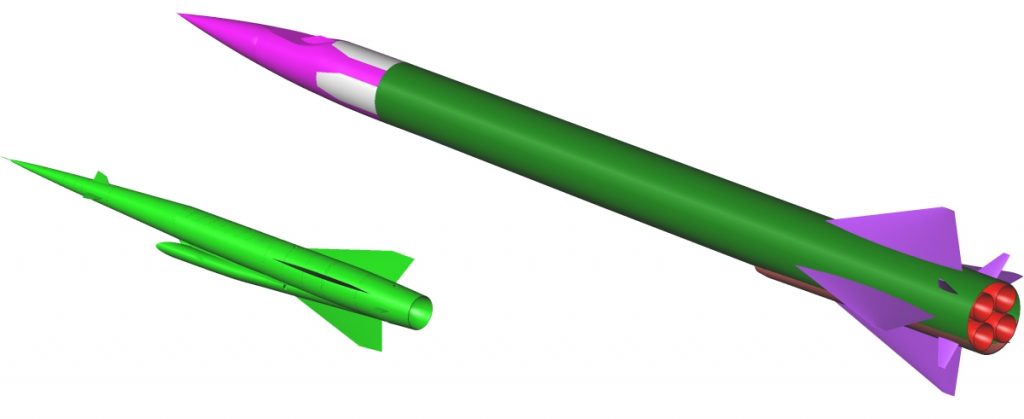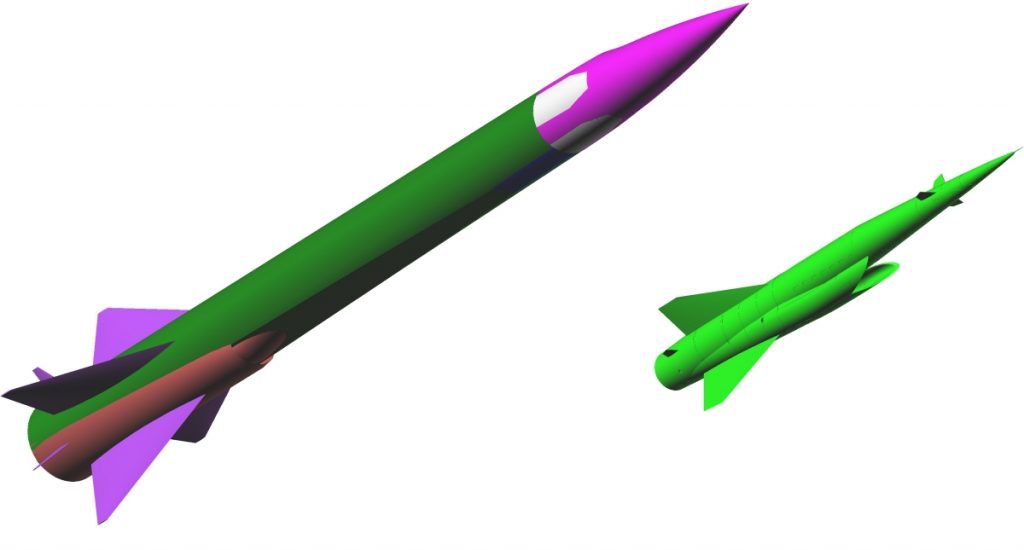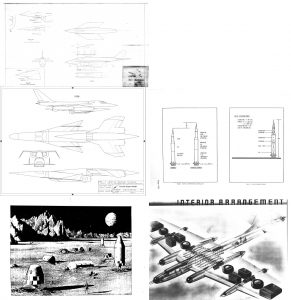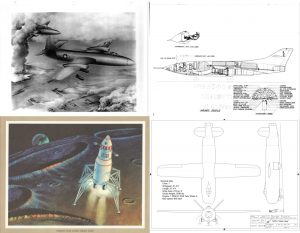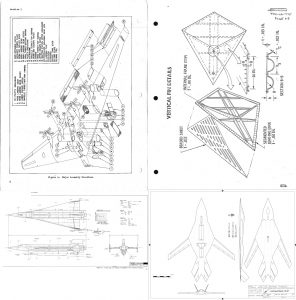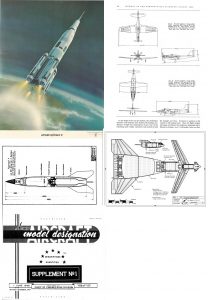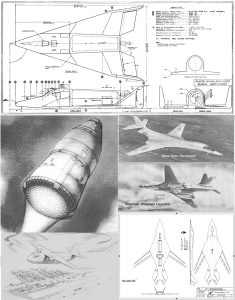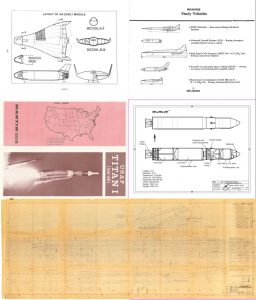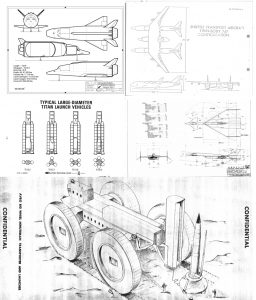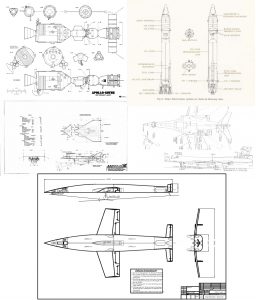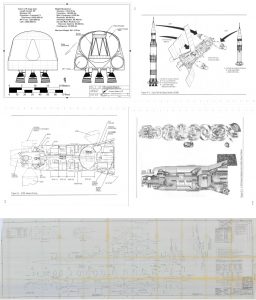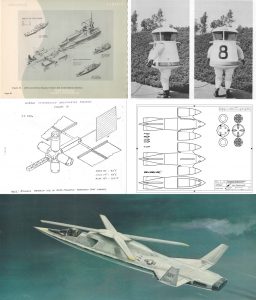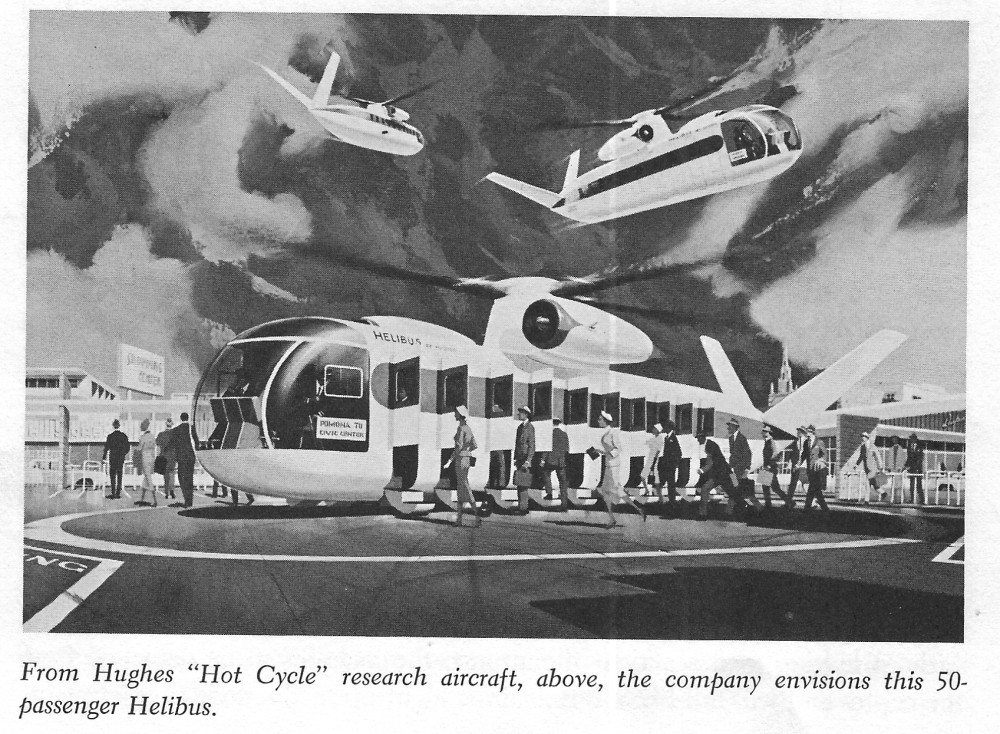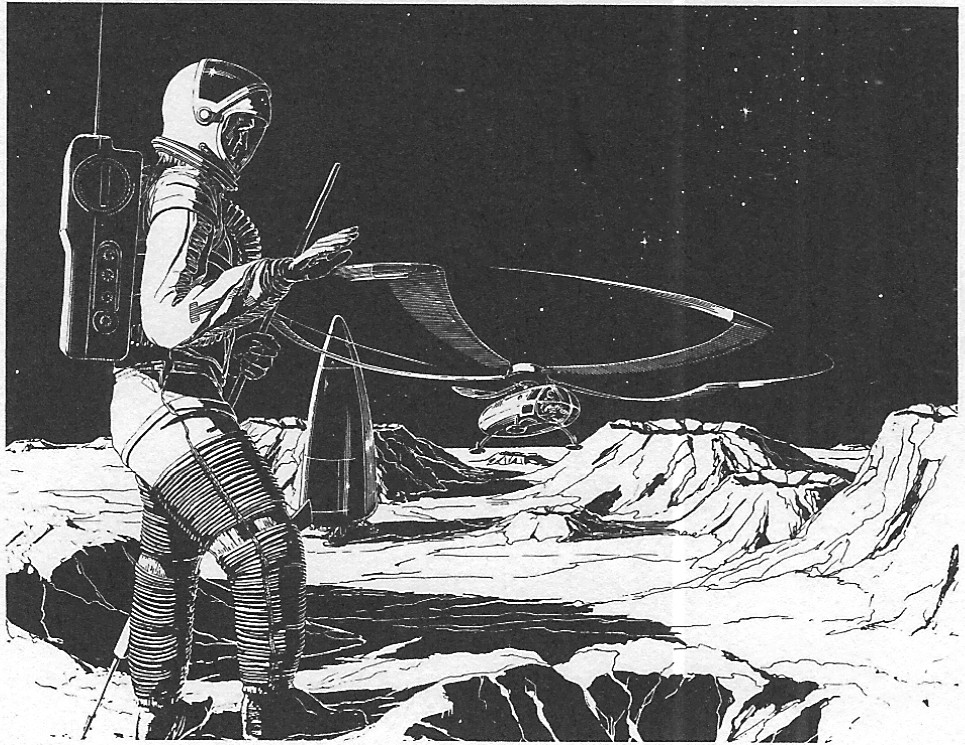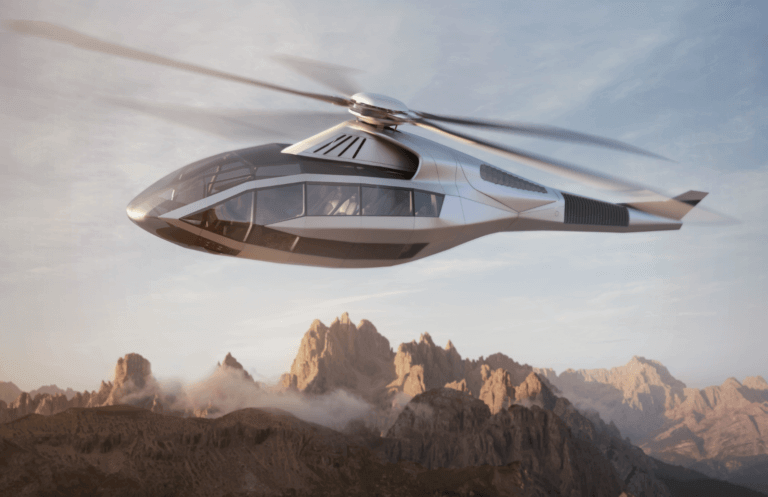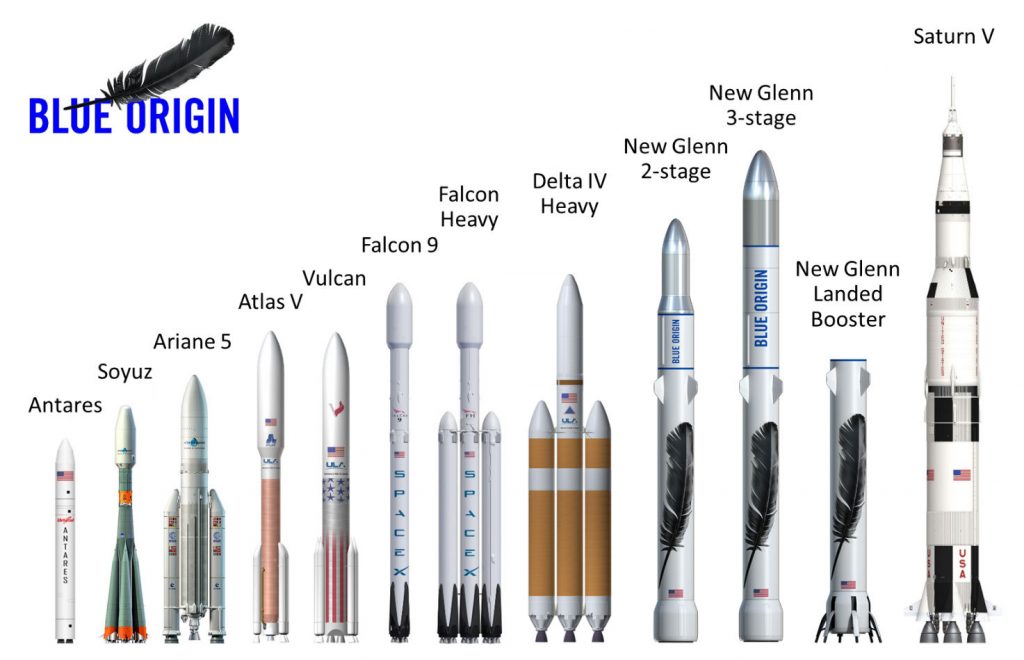The Pluto nuclear ramjet is often considered one of the crazier (or perhaps more accurately, “badass”) weapons systems ever considered by serious people. In short, it used a nuclear reactor as the heat source for an airbreathing ramjet; it would fly at a few hundred feet altitude at Mach 3 with nearly unlimited range. Several American aerospace corporations vied for the contract; LTV won the contract to build the airframe in 1961. The “Tory” nuclear ramjet was static ground tested with some success, but the program was cancelled in 1964.
Convair gave the concept considerable study from the beginning of the program in 1957 until at least 1961. Their “Big Stick” concept has been reasonably well known, but they had another idea that was somewhat further from the basic idea. It was mentioned in at least two briefings that I’ve come across; some amount of serious work was done on it, but the information I have is fragmentary. The concept was called simply the “Submersible Nuclear Ramjet.”
Pluto and Big Stick were unmanned cruise missiles. They would be launched from the ground with solid rocket boosters (some though was given to launching from ships, subs and aircraft) and would fly “grand tours” of the Soviet Union, spitting out a number of individual nuclear bombs. They would leave in their wake a line of ruin… the shockwaves from their passage would likely shake apart civilian structures, and the reactors would constantly spit out radioactive particles. At the end of the mission the missiles would crash into one final target.
But the Submersible Nuclear Ramjet would work a little differently. For starters… it was manned. There would be a crew on board throughout the mission.
Rather than starting off at some Air Force base, the Submersible Nuclear Ramjet would actually start off as a submarine, floating around on its own in the ocean. Propulsion would be provided by the nuclear reactor, serving as a “water ramjet” by heating seawater and expelling it. Feeding salt water, diatoms, kelp, fish and all the rest of the junk the ocean has to offer directly through a nuclear reactor seems a bit dubious.
When the order to begin an actual mission comes in, the propulsion system would be reconfigured from seawater-burning ramjet to seawater-burning rocket. The vehicle would expel stored seawater through the reactor, generating a large amount of thrust, enough to launch the craft vertically out of the water and up to high speed. The craft would then angle over towards the horizontal; the propulsion system would reconfigure once again, this time to an airbreathing nuclear ramjet. The vehicle would then fly a mission essentially similar to Plutos… low altitude, screamingly high speed, ejecting nuclear weapons as it goes. At the end of the mission, unlike Pluto it would *not* crash itself into one final target. Instead, the manned vehicle would return to secure waters and slow to subsonic speed. It would enter a vertical climb and slow to a stop; the ramjet would again reconfigure, this time back to rocket mode. Four drag brakes would deploy around the nose and the vehicle would back down into the water for a soft “splashdown.” It would of course land with nearly empty tanks, so it would be quite buoyant; until the tanks refill, it would likely sit tail-down in the water.
I’m going to try to find out more about this concept, but I have minimal hopes. I’ve gone all this time without hearing about it until just a few weeks ago.
Because why no, I’ve made a basic model of the concept. Complete accuracy is not assured… I have a top view and an inboard profile; as with a distressing number of concept aircraft diagrams, the views seem to conflict on things such as the cockpit canopy, and the inlet configuration is only partially shown. Still, it’s a really interesting concept.
If you’re interested in Pluto, take a look at Aerospace Projects Review issue V2N1. There is a very large, highly illustrated article on Pluto in that issue. If you are interested in the Submersible Nuclear Ramjet, keep an eye on US Bomber Projects… it will show up in the next issue or two.
The renders below show the Convair Submersible Nuclear Ramjet to scale with the LTV Pluto.
